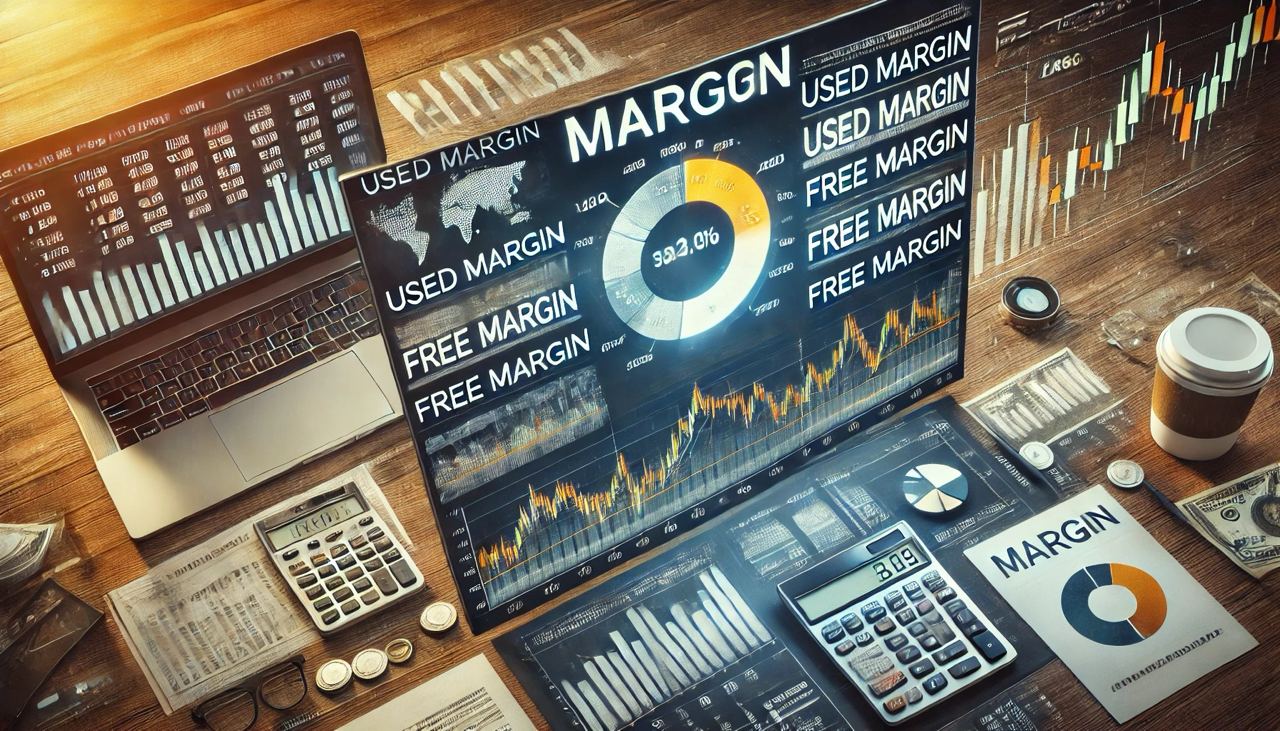Learn Trading for Free and Without Registration
An Online Glossary to Study Trading Independently
Margin in the Forex Market
Margin on Forex: A Detailed Guide with Practical Examples

Margin is a fundamental element of leveraged trading on the Forex market. It allows traders to open positions significantly larger than their actual deposit. However, its essence and mechanism often remain unclear, especially for beginners. In this article, we will break down the basics of margin, its calculation, practical examples, and its impact on trading.
What Is Margin?
Margin is the amount reserved in your account by the broker to secure an open position. It acts as collateral, ensuring the broker that even in the case of adverse price movements, losses won’t exceed the available funds in your account.
How Does Margin Trading Work?
Suppose you want to buy euros with dollars (EUR/USD), but your deposit is only $1,000. Without margin trading, you could only buy the equivalent of this amount. However, with margin and leverage (e.g., 1:100), you can open a position worth up to $100,000.
Illustrative Example: Imagine renting a car worth 100,000 rubles and leaving a deposit of 10,000 rubles. While using the car, the deposit remains with the company. If nothing happens to the car, the deposit is returned. If the car is damaged, the repair costs are deducted from the deposit. Similarly, margin is "locked" to cover potential losses while the position remains open.
Key Terms Related to Margin
-
Balance:
The total amount in your account, including the initial deposit and the results of all closed trades. -
Equity:
The current value of your account, including open positions. Calculated as:
Equity = Balance + Open Trade Profit/Loss. -
Margin:
The amount reserved for open positions. -
Free Margin:
Funds available for opening new positions or maintaining existing ones.
Free Margin = Equity – Margin. -
Margin Level:
The ratio of equity to margin, expressed as a percentage. Calculated as:
Margin Level = (Equity / Margin) × 100%.
How Is Margin Calculated?
Margin depends on three factors:
- Position size (lots).
- Leverage.
- The current exchange rate of the currency pair.
Calculation Example:
You open a position of 1 lot (100,000 base currency units) in EUR/USD with 1:100 leverage. The EUR/USD exchange rate is 1.2000.
Formula:
Margin = Position Size ÷ Leverage
Margin = 100,000 ÷ 100 = 1,000 EUR.
Converted into dollars at the current rate:
1,000 × 1.2000 = $1,200.
Thus, the required margin for this position is $1,200.
Impact of Margin on Trading
1. Hedged Positions
If you open both a buy and a sell position of the same size in EUR/USD, the margin for the second position is reduced. This allows you to use fewer funds for hedging.
2. Increased Margin Requirements
Some brokers raise margin requirements before weekends or significant economic events (e.g., Brexit) to account for increased risks due to market gaps.
Stop-Out and Margin Call
-
Margin Call:
A broker's notification that your margin level has dropped to a critical threshold (e.g., 100%), urging you to deposit more funds. -
Stop-Out:
Forced closure of positions by the broker when the margin level falls below a set limit (e.g., 50%).
Illustrative Example:
Imagine renting an apartment with a 50,000 ruble deposit. If you cause 30,000 rubles of damage, the landlord may request additional funds to restore the deposit to 50,000 rubles (margin call). If you fail to comply, they may terminate the lease (stop-out).
Practical Example
Deposit: $1,000
Leverage: 1:100
Currency Pair: GBP/USD
Exchange Rate: 1.3000
You open a 0.5 lot position (50,000 base currency units).
Margin = 50,000 ÷ 100 = 500 GBP.
Converted to dollars:
500 × 1.3000 = $650.
After opening the position, your balance remains $1,000, but equity fluctuates depending on the profit or loss of the open trade.
Tips for Managing Margin Effectively
-
Monitor Margin Levels:
Maintain a margin level above 100% to avoid margin calls. -
Limit Risks:
Use stop-loss orders to cap potential losses. -
Stay Informed:
Adjust positions during periods of high volatility. -
Choose a Reliable Broker:
Check the broker's margin requirements, including leverage and stop-out levels.
Conclusion
Margin on Forex is a powerful tool enabling traders to control large amounts of capital. However, without a clear understanding of how it works, it can lead to significant losses. By mastering margin principles, managing risks, and understanding broker requirements, you can trade confidently and effectively.
Educate yourself, practice diligently, and success will follow!


